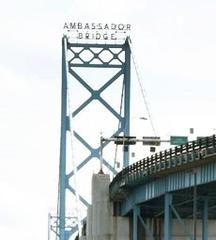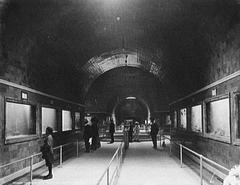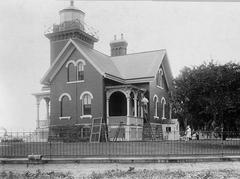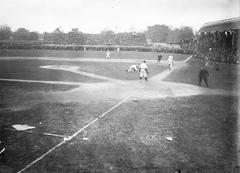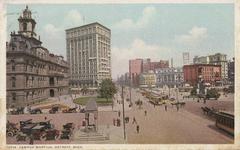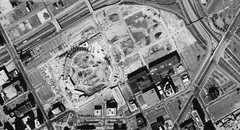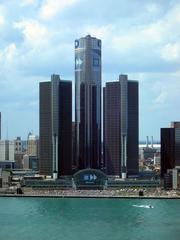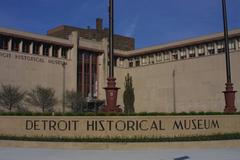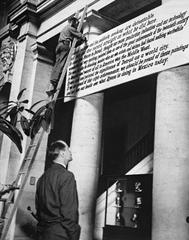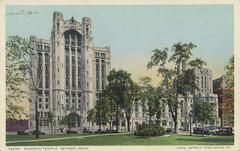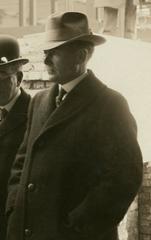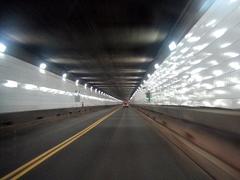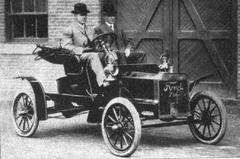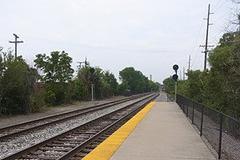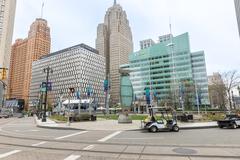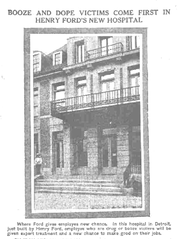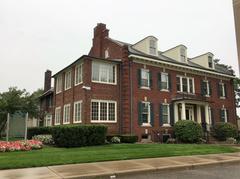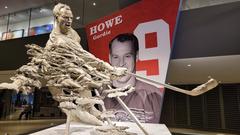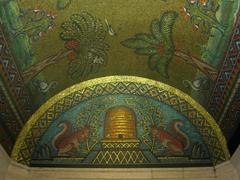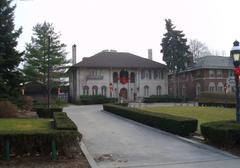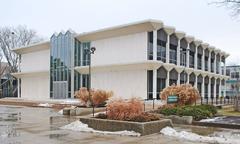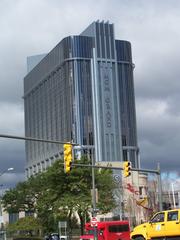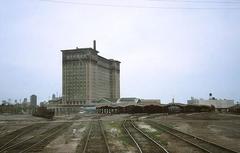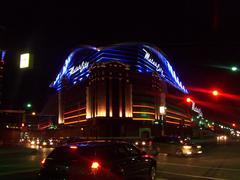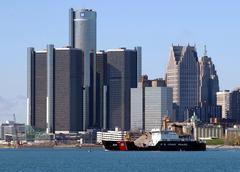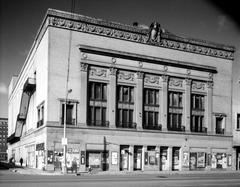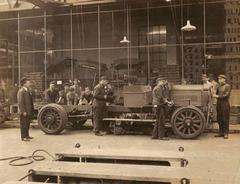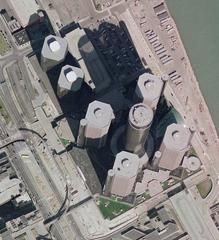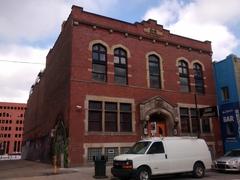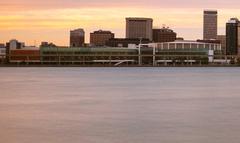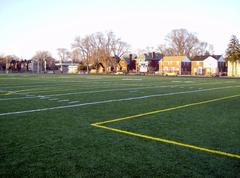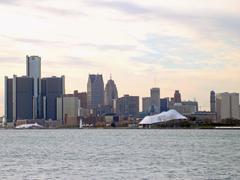
St. Stanislaus Bishop And Martyr Roman Catholic Church
St. Stanislaus Bishop and Martyr Church Detroit: Visiting Hours, Tickets, and Historical Sites Guide
Date: 04/07/2025
Introduction
St. Stanislaus Bishop and Martyr Roman Catholic Church in Detroit stands as a powerful symbol of the city’s Polish-American heritage and is celebrated for its extraordinary architectural and cultural legacy. Established in the early 20th century, the church embodies the faith, resilience, and traditions of Detroit’s Polish immigrant community. Its monumental Polish Cathedral style, a fusion of Romanesque Revival and Baroque Revival elements designed by Harry J. Rill, captivates visitors with its artistry and scale. Although the parish closed in 1989, St. Stanislaus remains a vital site for heritage tourism and cultural preservation, representing over a century of spiritual and communal history (Detroit Historical Society, National Register of Historic Places, Detroit Free Press).
Table of Contents
- Introduction
- Architectural Style and Historical Context
- Visitor Information: Hours, Tickets, and Accessibility
- Travel Tips and Directions
- Exterior Features and Symbolism
- Interior Layout and Spatial Organization
- Stained Glass and Artistic Detailing
- Altars, Statues, and Liturgical Furnishings
- Ceiling Murals and Decorative Painting
- Organ and Musical Heritage
- Preservation and Restoration Efforts
- Visitor Experience and Architectural Highlights
- Frequently Asked Questions (FAQs)
- Role in Detroit’s Polish-American Heritage
- Social Functions and Community Outreach
- Cultural Preservation and Intergenerational Bonds
- Impact on Detroit’s Urban Landscape
- Interfaith and Multicultural Engagement
- Pilgrimage and Heritage Tourism
- Preservation Status and Challenges
- Community Sentiment and Advocacy
- Opportunities for the Future
- Photography and Exploration Tips
- Nearby Attractions and Amenities
- Conclusion and Call to Action
Architectural Style and Historical Context
Constructed between 1911 and 1913, St. Stanislaus Bishop and Martyr Church is a masterwork of the Polish Cathedral style, a distinctive subset of the Romanesque and Baroque Revival movements popular among Polish-American communities in the Midwest. Designed by Detroit architect Harry J. Rill, the church features a grand red brick façade with limestone trim, twin bell towers, and intricate stonework—hallmarks of the monumental and ornate architectural tradition intended to reflect both spiritual aspirations and ethnic pride (Detroit Historical Society).
Visitor Information: Hours, Tickets, and Accessibility
- Visiting Hours: The church is generally open Monday–Saturday from 9:00 AM to 5:00 PM and Sundays from 7:00 AM to 1:00 PM. Hours may change during holidays or special events; always check the official parish website or call ahead.
- Admission: Entry is free, with donations encouraged to support preservation.
- Accessibility: Ramps and accessible restrooms are available. Assistance can be provided upon request.
- Guided Tours: Occasional guided tours are organized by local groups, such as the Detroit Experience Factory (Detroit Experience Factory). Advance scheduling is recommended.
Travel Tips and Directions
St. Stanislaus is located in Detroit’s historic Poletown neighborhood:
- By Car: On-site and street parking available. The church is about 5 miles east of downtown Detroit.
- By Public Transit: Multiple DDOT bus routes serve the area—check schedules for current routes.
- Nearby Attractions: The Detroit Historical Museum and Eastern Market are within easy reach, making for a full day of cultural exploration.
Exterior Features and Symbolism
The church’s dramatic façade is defined by its two soaring bell towers, topped with copper domes that have acquired a striking patina. These towers, which rise approximately 120 feet, are visible from the I-94 freeway and serve as both architectural landmarks and symbols of faith (Historic Detroit). The central entrance is framed by a grand Romanesque arch adorned with religious reliefs, and a large rose window above the doors bathes the nave in colored light, referencing medieval European church traditions.
Interior Layout and Spatial Organization
Upon entering, visitors encounter a vast, vaulted nave seating over 1,200 people. The Latin cross floor plan includes a prominent transept and a sanctuary highlighted by massive Corinthian columns and a barrel-vaulted ceiling. The walls are richly decorated with plasterwork, gilded moldings, and murals, all designed to evoke awe and reverence (Archdiocese of Detroit).
Stained Glass and Artistic Detailing
The church contains a celebrated collection of stained glass windows imported from Munich, Germany. These windows depict biblical scenes and Polish saints, featuring vivid colors and intricate craftsmanship. The stained glass is a defining element of the Polish Cathedral style, creating a powerful interplay of light and color within the sanctuary (Detroit Free Press).
Altars, Statues, and Liturgical Furnishings
The sanctuary’s high altar is crafted from Italian marble and adorned with gilded statues of Christ, the Virgin Mary, and St. Stanislaus. Additional side altars honor Polish saints. Throughout the church, visitors will find hand-carved oak furnishings, statues, and the Stations of the Cross, many of which were commissioned from European artists.
Ceiling Murals and Decorative Painting
St. Stanislaus’s ceiling murals, painted by Polish-American artists, depict scenes from the life of Christ, the Virgin Mary, and the church’s patron saint. These murals, framed by gilded moldings and stenciling, blend academic realism with folk influences, serving as both art and theological instruction (Polish Art Center).
Organ and Musical Heritage
Installed in 1914, the historic Austin Organ Company pipe organ features over 2,000 pipes and has accompanied countless services and celebrations. Its presence underscores the centrality of music in Polish Catholic worship and the parish’s commitment to cultural enrichment (Organ Historical Society).
Preservation and Restoration Efforts
Despite facing urban decline, population shifts, and economic challenges, dedicated preservationists and former parishioners have worked to restore the church’s roof, stained glass, and murals. Grants and community support have played a critical role in these efforts, ensuring the survival of one of America’s finest Polish Cathedral churches (Detroit News).
Visitor Experience and Architectural Highlights
Highlights for visitors include:
- The iconic twin bell towers, visible from afar.
- The grand rose window and vibrant stained glass.
- The marble high altar and elaborate reredos.
- Exquisite ceiling murals and decorative painting.
- The historic pipe organ in its original loft.
Photography is permitted, but please be respectful of ongoing religious activities and restoration work.
Frequently Asked Questions (FAQs)
Q: What are the current visiting hours?
A: Monday–Saturday, 9:00 AM–5:00 PM; Sunday, 7:00 AM–1:00 PM. Confirm before your visit.
Q: Is there an admission fee?
A: No, but donations are encouraged.
Q: Are guided tours available?
A: Tours are offered occasionally; check Detroit Experience Factory or the parish website.
Q: Is the church accessible for those with disabilities?
A: Yes, with ramps and accessible restrooms.
Q: Can I take photos?
A: Photography is generally allowed—please be courteous.
Role in Detroit’s Polish-American Heritage
St. Stanislaus was established to serve the spiritual and social needs of Detroit’s burgeoning Polish immigrant population in the late 19th and early 20th centuries. The parish hosted Polish-language services, festivals, and cultural events, helping to preserve language, folk art, music, and traditions (Detroit Historical Society, Polish Art Center).
Social Functions and Community Outreach
The church complex included a school, convent, and community hall, offering education and social services. Its halls have fostered Polish choirs, folk dances, and communal meals. In times of hardship, the parish provided relief, food drives, and job assistance (Detroit Free Press).
Cultural Preservation and Intergenerational Bonds
Annual events such as parish festivals, processions, and pageants have connected generations to their heritage. The church’s archives, language classes, and folk groups ensure the continuity of Polish culture in Detroit.
Impact on Detroit’s Urban Landscape
St. Stanislaus’s imposing presence has anchored Poletown through decades of change, underscoring the role of religious landmarks in urban identity and revitalization (Roadtrippers).
Interfaith and Multicultural Engagement
The church has collaborated with diverse religious and cultural groups in Detroit, hosting ecumenical services and community events that bridge cultural divides.
Pilgrimage and Heritage Tourism
St. Stanislaus is featured in walking tours and heritage itineraries, attracting visitors interested in Detroit’s immigrant and religious history (National Park Service).
Preservation Status and Challenges
Listed on the National Register of Historic Places since 1989 and protected as a Detroit Historic District, the church faces ongoing challenges including structural issues, loss of fixtures, and neighborhood decline. Emergency demolition remains a possibility if safety is compromised, but preservation advocates continue to work toward a sustainable future (Detroit News).
Community Sentiment and Advocacy
Former parishioners and preservation groups remain deeply invested in the church’s future, advocating for adaptive reuse as an arts venue or community center. Community support is crucial for its preservation.
Opportunities for the Future
- Historic Protections: Legal status enables access to grants and incentives.
- Location: Proximity to major cultural institutions and the Joe Louis Greenway trail.
- Adaptive Reuse Potential: The church’s size and location offer opportunities for creative redevelopment.
Photography and Exploration Tips
- Obtain permission for interior visits.
- Exercise caution due to the building’s condition.
- Best exterior views are from the I-94 freeway and adjacent streets.
Nearby Attractions and Amenities
- Detroit Institute of Arts: World-class art collections nearby.
- Midtown Detroit: Dining, shopping, and cultural venues.
- Eastern Market: Historic market district.
- Joe Louis Greenway (Upcoming): Will improve pedestrian and bike access.
Conclusion and Call to Action
St. Stanislaus Bishop and Martyr Roman Catholic Church stands as a testament to Detroit’s rich immigrant history, architectural ambition, and enduring community spirit. Despite challenges, it remains a beacon of faith, art, and cultural resilience. Whether you are drawn by its architectural grandeur, historical significance, or vibrant traditions, St. Stanislaus invites you to explore, learn, and support ongoing preservation efforts.
Plan your visit, participate in cultural events, and follow updates through official channels. Download the Audiala app for curated itineraries and stay engaged with Detroit’s cultural heritage.
References
- St. Stanislaus Church, Detroit Historical Society
- Polish Community, Detroit Historical Society
- Detroit Free Press, 2016, “Detroit’s St. Stanislaus Church stained glass”
- National Register of Historic Places, St. Stanislaus Church Listing
- Detroit News, 2018, “St. Stanislaus Church preservation efforts”
- Detroit Experience Factory, Tours and Visitor Information
- National Park Service, National Register of Historic Places Program
- Polish Art Center, Cultural Heritage and Art

